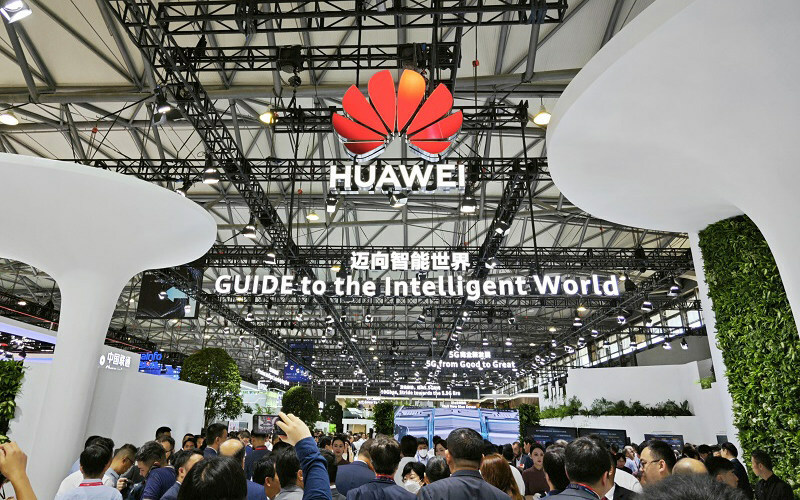Huawei has shown up in full force for MWC Shanghai 2023, with their activities all falling under their theme of “GUIDE to the Intelligent World”. This year, the company’s activities include an experiential tour that takes audiences to multiple cities to learn about their technology and business, as well as the launch of its newest innovative products and solutions for 5GigaGreen, 5G intelligent core networks, Intelligent OptiX Networks, private line + X products, and other intelligent digital transformation solutions.
At these activities, Huawei will also host numerous roundtables and dialogues with global operators, industry partners, and opinion leaders, to explore a variety of topics which include speeding up 5G prosperity, advancing intelligent digital transformation, and striding towards the 5.5G era to realize business, industry, and social value. The company says its goal is to create new value for customers and revitalize the digital economy through sustained innovation.
Sabrina Meng, Huawei’s Rotating Chairwoman and CFO, gave a keynote titled “Embracing 5G transformation”. She said, “The digital infrastructure of the future intelligent world will be deeply integrated into every aspect of our lives, industry, and society. It won’t be based on advancements in individual technologies, but rather on incredibly massive, complex systems – the convergence of multiple elements. It’s going to require systems-level thinking and design. When watching a chess game, you can see the big picture. But when you’re playing chess, you focus on the details. Likewise, systematic capabilities to integrate technology and transform management are critical for the future success of 5G. First, let’s talk about integrating different technologies. We can achieve greater synergy across cloud, networks, edge, and devices through systematic design and innovation across domains. When coupled with optimization across software, hardware, chips, and algorithms, we can address the challenges associated with developing complex solutions for vastly different industrial scenarios. Next, management transformation. Digital and intelligent transformation is not just about technology itself. It’s more about transforming your approach to management. Going digital requires redefining the relationships between people, events, things, and theory, and adopting a more open, forward-looking management approach to address future challenges.”
There are currently over 1.2 billion 5G users worldwide, and operators who moved quickly to develop 5G are already enjoying the first wave of benefits. This is thanks to the increasing network requirements being set by new applications in various markets. In the consumer market, new services like New Calling, cloud phones, and glasses-free 3D require faster data rates and lower latency, while in the industrial market, the RedCap ecosystem has matured, the passive IoT market is expanding, and the Internet of Vehicles (IoV) requires higher uplink speeds. These all-scenario applications are expected to result in 100 billion connections. These new service models are also expected to drive industry upgrade that will create a second wave of benefits.
Commercial 5G services hit the market four years ago, and has since been introduced to more than 17,000 private-network projects around the world. Both revenue from 5G private networks and the number of industrial connections have tripled. In addition, many operators have leveraged the CNY10 billion in revenue earned from 5GtoB private networks to drive a CNY100 billion increase in DICT revenue from cloud, data storage, and platform services. While many 5GtoB services were piloted in China, they have since expanded to other parts of the world, and have been commercially replicated in Asia Pacific, Europe, the Middle East, and Africa. These services allow industry customers to reduce costs and improve efficiency, while enabling intelligent digital transformation in industries like manufacturing, ports, mines, oil fields, and healthcare.
5.5G is also rapidly approaching for the communications industry. 5.5G technologies are expected to improve network capabilities 10-fold and create 100 times more business opportunities for operators. At this year’s MWC Shanghai, Huawei is showcasing four of the major features of 5.5G – 10 Gbit/s downlink, 1 Gbit/s uplink, 100 billion connections, and native AI. It is also exploring the five connectivity areas expected to go mainstream with 5.5G – connectivity for people, for things, for vehicles, for industries, and for homes. Huawei has already started helping a number of operators around the world begin commercial verification of 5.5G. The 5.5G industry will continue growing quickly as the first release of 5.5G standards is expected to be frozen in the first half of 2024 and related technologies have already been extensively verified.
MWC Shanghai 2023 runs from June 28 to June 30 in Shanghai, China. Huawei will showcase its products and solutions at stands E10 and E50 in Hall N1 of Shanghai New International Expo Centre (SNIEC). Together with global operators, industry professionals, and opinion leaders, we dive into topics such as speeding up 5G prosperity, striding towards the 5.5G era, and intelligent digital transformation. 5.5G creates new business value in areas like connecting people, Internet of Things (IoT), and Internet of Vehicles (IoV), supporting countless industries as they move towards an intelligent world. For more information, please visit: https://carrier.huawei.com/en/events/mwcs2023.
Photo – https://mma.prnewswire.com/media/2142893/Huawei_s_booths_MWC_Shanghai_2023.jpg
